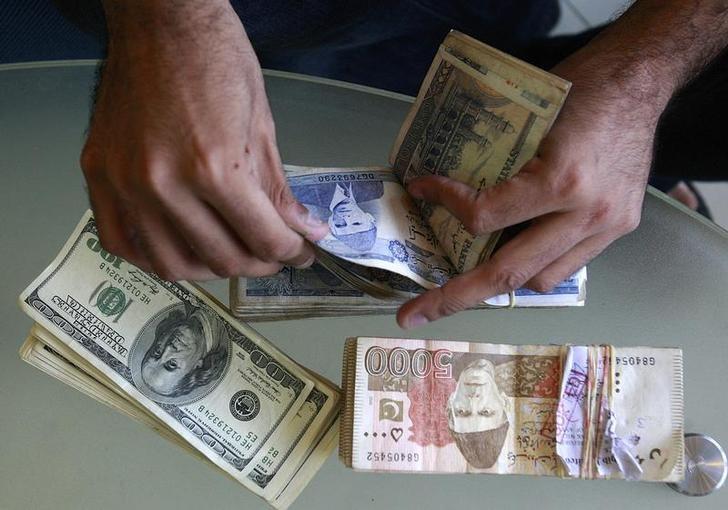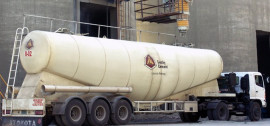
An analysis of tax collection by the field formations in July-December of the current fiscal year revealed that the contribution of withholding tax to total income tax receipts was in the range of 75% to 95% in the case of 20 out of 23 formations.
Net income tax collection by the 23 field offices came in at Rs695.7 billion, of which 70.6% or Rs491.5 billion came in the form of withholding tax.
The share of withholding tax in the first half was 4% higher than the same period of previous year, indicating growing reliance on the regressive mode of taxation.
In policy reversal, FBR reduces real estate valuations in big cities
Tax revenues are growing despite growing corruption and inefficiency in the FBR. In November, Prime Minister Shahid Khaqan Abbasi had taken notice of rampant corruption and appointment of officers with “embarrassingly compromised reputations” at key positions in the FBR.
However, after that nothing has happened and the PM Office is sitting on a report about hundreds of FBR officials serving at key positions.
Sources said the PM Office was looking complacent after the double-digit revenue growth, although it had fallen short of the quarterly targets. It seems this has deflected attention from accountability and broadening of the tax base.
The FBR has also failed to widen the extremely narrow tax base despite giving numerous extensions for filing income tax returns. The number of filers by the end of January 2018 stood at 1.220 million, according to FBR’s Inland Revenue Policy member Dr Mohammad Iqbal.
Income tax analysis
There are four Large Taxpayer Units (LTU) and 19 Regional Tax Offices (RTOs) that collect income tax and sales tax across the country. More than 16,000 people are currently working in these field formations.
The government has broadened the scope of withholding tax under its strategy of charging higher tax rates from non-filers of income tax returns. This has helped increase tax collection, but the tax base has remained narrow.
FBR’s data showed that an overwhelming majority of these units were solely relying on withholding tax. LTU Karachi-II collected Rs74.7 billion in income tax in the first half, of which 94.8% or Rs70.8 billion came in the shape of withholding tax.
RTO Karachi-I collected Rs57.93 billion in income tax, of which Rs51.5 billion or 89% was withholding tax.
RTO Karachi-III received Rs42.3 billion worth of income tax, of which about Rs40 billion or 94.4% comprised withholding tax. RTO Karachi-II got Rs39 billion in income tax where withholding tax had a share of Rs32 billion or 83%.
LTU Karachi was the only field formation in Karachi that collected about 70% of income tax through collections other than withholding tax. Its total collection was Rs121.8 billion where withholding tax had a share of Rs36.3 billion.
RTO Lahore-II collected Rs41.7 billion in income tax, of which Rs39.7 billion or 95.2% was withholding tax. RTO Lahore-I generated Rs34.1 billion which included Rs28.5 billion (83.4%) in withholding tax. LTU Lahore wax an exception that collected Rs12.2 billion or 22.6% of total taxes in withholding tax.
Similarly, the LTU Islamabad received Rs91.4 billion in income tax in which the share of withholding tax was almost half.
Pakistan GasPort, FBR engaged in Rs1.5b tax row
The three LTUs made most of their collections through taxes other than withholding tax primarily because of big corporations registered with them.
RTO Islamabad collected Rs32.2 billion in income tax, of which Rs28.3 billion or 87.7% was withholding tax. RTO Rawalpindi got Rs22.2 billion in income tax with withholding tax contribution at Rs20.5 billion or 92.7%.
RTO Multan collected only Rs20.8 billion in income tax and three-fourths of it was in the shape of withholding tax. RTO Peshawar’s income tax collection stood at Rs18.6 billion, of which almost 80% was withholding tax.
RTO Hyderabad’s income tax contribution was Rs12.7 billion where withholding tax contribution was 83%. RTO Faisalabad collected only Rs12.7 billion, of which Rs9.8 billion or 77% was withholding tax.
RTO Quetta collected Rs6.5 billion with withholding tax share at 82.3%. RTO Sukkur collected Rs5.9 billion with withholding tax at 90.6% of the total.
RTO Bahawalpur generated Rs5.8 billion, but 89% of it was withholding tax. RTO Gujranwala collected Rs5.7 billion with 77.7% in withholding tax whereas RTO Sialkot collected just Rs5.3 billion, of which 85% was withholding tax.
The withholding tax contribution in the case of RTO Sargodha, Abbottabad and Sahiwal was in the range of 84% to 91.6%.
Published in The Express Tribune, February 4th, 2018.
Like Business on Facebook, follow @TribuneBiz on Twitter to stay informed and join in the conversation.












































COMMENTS (2)
Comments are moderated and generally will be posted if they are on-topic and not abusive.
For more information, please see our Comments FAQ